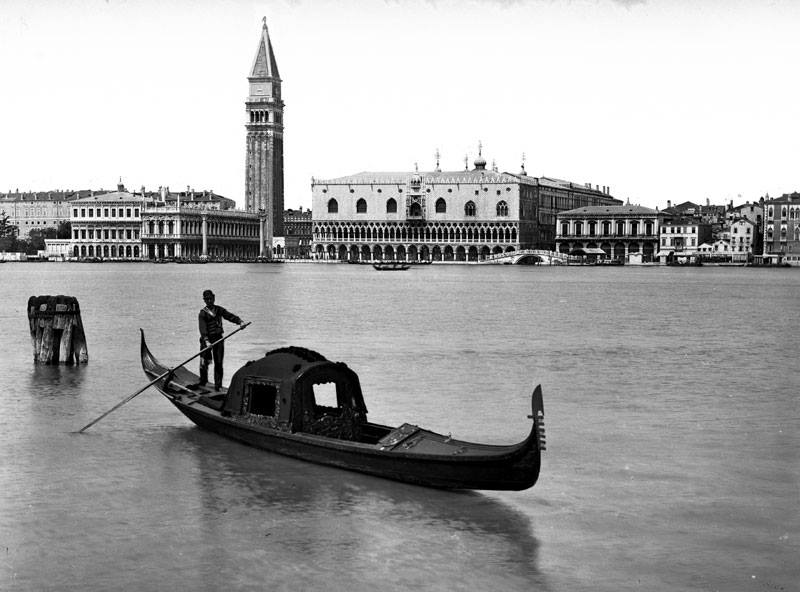The gondola is the most well-known boat in the world: even people who have never been to Venice can immediately recognize its unique shape, the metal bow decoration and for the distinctive Venetian rowing style.
Like all the other lagoon boats the gondola has a flat bottom which allows it to float in very shallow water. The most important characteristic of the gondola is its longitudinal asymmetry: the keel is not straight but curves towards the right so that the gondola lists to the right. This counterbalances the push of the single oar which would tend to direct the boat to the left.
But how was the gondola ‘born’? There was no inventor nor designer: the boat that we see gliding in the Venetian canals was developed through the centuries with gradual and imperceptible variations.
Some curious facts: the gondola weighs about 400 kg, is built using eight different types of wood : elm,mahogany,fir,larch, oak,cherry,walnut, linden
Before being used exclusively for tourism, the gondola made use of a removable cabin called a felse for use in the winter or during the night. It came with a door and sliding windows with Venetian blinds and curtains, a mirror and a charcoal burner. The felse was used to protect the passengers from the cold and from prying eyesThe degree of curvature is based on the weight of the gondolier.

